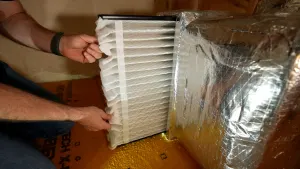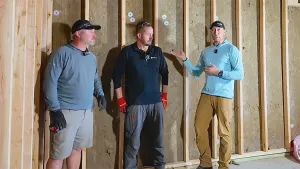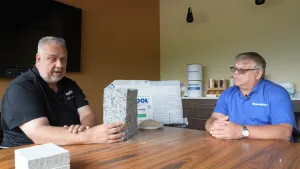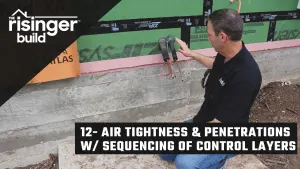We talk a lot about the importance (and benefits) of how we insulate our home projects, and one of our go to products is mineral wool, like Rockwool offers. If you are going to use Rockwool insulation, let’s take a look at some tips and tricks that will simplify the installation process.
Rockwool is a favorite because of its fire-resistant, water-repellant, and soundproofing properties and using it can result in an insulation performance that exceeds building codes.
What can you do with mineral wool? A lot of things. Use it to insulate your exposed floor, insulate the areas around pot lights, interior walls, blanket your home’s exterior, insulate basements, stuff it in small places, and use it to soundproof your bathroom, home theater, attic, or even your entire home from external noise, like traffic.
The best part about Rockwool insulation products (there’s many to choose from) is their ease of use. For starters, you can use a bread knife to cut it into desired pieces—or a drywall knife if you don’t have a bread knife, and then simply fit the batt into place.
Measuring
Make sure to measure all areas that need to be insulated and then cut your insulation accordingly. Generally speaking, you should make your batt about one to 1.5 inches longer than you need it to be when cutting or about one half to one inch wider on either side than it needs to be. This extra padding will give it the tight friction fit you want.
Obstructions
When cutting around obstructions, objects like pipes and wires, measure the obstructions, measure your batt, and create v-notches in the batt to account for the size of the obstruction. When dealing with larger obstructions like electrical boxes, measure the box and make a cut out where the box will fit into the batt.
Installing on Existing Insulation
If you’re adding insulation, make sure the previous insulation isn’t squashed or hasn’t sagged.
Insulating Exposed Floors
Rockwool is great for insulating exposed floors over unheated spaces, as well. For example, a crawlspace or exposed porch. When using it in this capacity, consider the following:
- Do not use a vapor barrier on the cold side because warm air from inside will mix with outside air and create moisture.
- Use exterior-grade strapping—if you really feel you need the extra security—but you don’t have to. Insulation supports are a quick and effective solution if some support is needed in the joist cavity.
- Use another layer like Comfortboard IS to further insulate studs and air spaces.
Storage
Rockwool can be stored outside, as long as it is still wrapped, despite weather conditions.
Installation: As with any insulating job, we always recommend wearing the appropriate safety gear, like googles, gloves and long sleeves.

 Share on facebook
Share on facebook Tweet
Tweet Email
Email Share on Linkedin
Share on Linkedin














